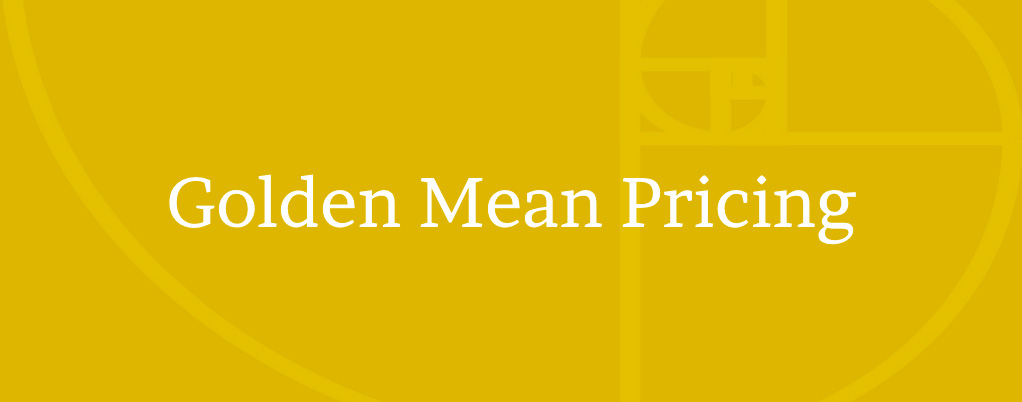
We’ve all been there before. You’ve been approached to work on a project as a freelancer or small business owner. The client has unloaded a ton of information during a sit down that you have to digest and turn into a proposal that breaks down the scope of work and cost. Now you’re knee deep in the sales process faced with the challenge of assigning a price to a project requiring a range of creative services.
Creative projects can include anything from copywriting, to design, to development. The unique thing about the creative industry is the multitude of factors that go into pricing along with the non-uniformity of the trade itself.
Projects are rarely identical, unlike a commodity or a common service where a consistent deliverable requires a consistent fixed price based on its market competitors. A WordPress website with four unique page layouts in New York may be priced the same as a WordPress website with eight unique page layouts in Omaha. Markets, project scope, and your expertise all factor into this wild equation.
If you’re like me, at one point you’ve struggled with pricing creative project work. One of the hardest things for any freelancer, small business owner, or business developer to dial in accurately is the pricing of unpredictable creative projects. I tackle this topic in Part 2: “The Struggles of Pricing Creative Projects” of the “Golden Mean Pricing” eBook.
Over my time as both a freelancer and now partner at my branding and digital production agency Luminus, I’ve bounced back and forth between multiple pricing strategies. I’ve found each to have strengths and weaknesses that at the time have either drastically helped or drastically hurt my efforts to close sales at any given time over the years. Through these experiences I have been able to develop my own view on how to illustrate and calculate the perfect pricing but first, here’s a rundown of a few of the most common pricing models for creative projects.
Popular Pricing Models for Creative Projects
 Matt Griffin: Bearded
Matt Griffin: Bearded
Hourly Pricing is a popular go to option because creatives believe it protects their interests the most. The challenge with Hourly Pricing is that it has the potential to make the client feel vulnerable to excessive billing unless they are incredibly comfortable with you and your work ethic. Matt Griffin (Bearded Studio) has used Hourly Pricing to help grow his business and control Bearded’s workload. The key to their success has been building and relying on a group of strong ongoing client relationships.
 Dan Mall: Superfriendly
Dan Mall: Superfriendly
Value Based Pricing has become a hot topic lately with preachers like Dan Mall (SuperFriendly) spreading the word about providing tiered pricing options for clients based on the value you believe they are requesting and potentially what more you can offer them beyond that. This system works well for finding a balance, but can at times lead to lost bids or lower tier non-optimal options being chosen with the expectation of the elevated optimal tier still stuck in the client’s head.
 Ben Callahan: Sparkbox
Ben Callahan: Sparkbox
Another option that has been making waves is Collaborative Pricing, taking queues from both Hourly Pricing and Value Based Pricing methods with a twist. Ben Callahan (Sparkbox) uses a spreadsheet that breaks down project tasks (copy, design, development, etc.) hourly and then shares an editable online document with the client allowing them to adjust any minimum and maximum hourly amounts they desire. My opinion is that this is a great system, but may only find high success rates with larger long-term projects or retainer-style relationships.
For a more in-depth look at each of these strategies, check out the “Pros & Cons of Popular Creative Project Pricing Models” section from the “Golden Mean Pricing” eBook.
Developing My Own Pricing Model
At some point in the last six years I’ve tried each of this systems. I’ve had successes and failures, but in every case I’ve lacked consistency in sales conversion percentages regardless of which tactic I used. I was unable to settle on a predictable and successful pricing system that I could fully believe in.
I wanted a system that was flexible from project type to project type and yet still calculated the situation by allowing me to make an educated decision on picking that magic number the client wanted to see. That’s what led me to defining the model I call “Golden Mean Pricing.”
Using Golden Mean Pricing to Price Creative Projects
Over the last year I’ve taken some time to analyze what I like about each method and try to find a system of my own to try and achieve the consistency I need as a business owner to predict closing sales and revenue forecasts. I’ve even talked personally to each of the pricing method preachers mentioned earlier in this post.
Once stepped back and looked at the bigger picture, I developed a system that I’ve dubbed Golden Mean Pricing. The Golden Mean is a philosophical term by one of my favorite philosophers (from the one philosophy class I took in college) Aristotle. The Golden Mean is “the desirable middle between two extremes, one of excess and the other of deficiency.” In this theory I’ve identified the two extremes as Hourly Pricing and Value Based Pricing. Collaborative Pricing is the closest model I’ve found to what I believe works. Unfortunately, the circumstances I’ve found Collaborative Pricing to be successful with are limited in opportunity. For most common creative project proposals this tactic is a bit of overkill and takes longer to execute. Golden Mean Pricing balances the three strategies into one formula.
How Does Golden Mean Pricing Work?
The key to Golden Mean Pricing is identifying the point between the Hourly Priced floor and the Value Based ceiling that you as the business developer believe the client will also find comfortable while protecting your revenue return. I strongly believe that a client wants to simply be shown one cost and how that will accomplish their objectives. All we’re trying to do is get it right for both sides on the first try. Make sure that when you decide on a price, it’s within the client’s comfort zone, since they’ll likely compare it to other quotes.
Learn how to calculate each part of the Golden Mean Pricing strategy in the “How Golden Mean Pricing Works” section of the eBook..
Using each part of the Golden Mean Pricing formula will allow you to use your judgement to pick the optimal project price. If the client on a limited budget, but the natural Golden Mean is too far beyond their max budget, you may choose to slide the mean closer to the Hourly Priced floor. If you know the client can afford extra design time, other collaborators from your network being brought in, or add-on services, you may slide the mean towards the Value Based ceiling.
The result of this three-part exercise will be a flat-rate creative project quote that you are confident fulfills your hourly estimation, but tempers the client’s lofty dreams which they wouldn’t be able to afford had they known the costs.
This sweet spot is the Golden Mean Price and will allow you to confidently explain the costs for the quality work your client is seeking, while allowing them the comfort of seeing a flat rate to plan for financially.
If you, your clientele, niche, or market don’t quite fit in with the other traditional pricing models because of size or budget, then Golden Mean Pricing may be able to help you price projects and more regularly close sales.
Have you had success experimenting with different pricing models? I encourage you to read the “Golden Mean Pricing” eBook and try it out! Feel free to hit me up @timbouchard to discuss how it worked for you!
